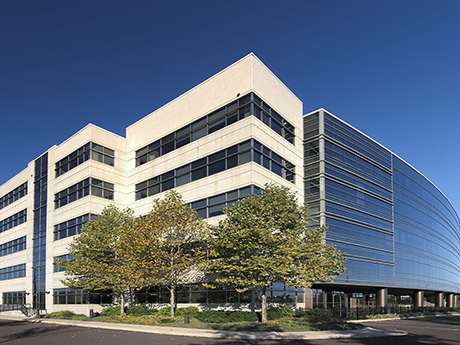By Marc DeLuca, CEO and eastern regional president, KBS
Refreshing office properties with updated amenities is a time-tested strategy for infusing buildings with new life and appealing to future and existing tenants. While an asset’s location is a fixed element and a region’s fundamentals tend to change slowly, amenities are more flexible and can usually be implemented quickly if necessary for immediate impact.
A recent report by flexible workspace provider TCC Canada found that many companies and their team members increasingly recognize the benefits of gathering teams in a central workplace. But after more than two years of varying degrees of remote work, it makes sense for property owners to invest in amenities that actually meet the needs and wants of office users — which have recently shifted.

Marc DeLuca, KBS
So which amenities are the best ones to include in today’s office buildings?
As an owner and operator of premier office assets for the last 30 years, KBS has witnessed amenity preferences come and go. We know how to spot a passing fad versus a trend with legs. Based on our expertise in this area, here are a few amenities we see attracting office tenants in the current and emerging environment.
Scalable Meeting Spaces
Employees are looking for workplaces that support meetings for small, medium and large groups. This can be accomplished by designing work areas in a variety of sizes to accommodate brainstorming among a few individuals, team bonding sessions, formal corporate events and more.
For example, at 1000 Continental, a Class A office building in King of Prussia, a northern suburb of Philadelphia, KBS recently collaborated with Avison Young to complete a series of renovations. These upgrades included the addition of a conference center with casual gathering spaces. These areas are sized for everything from smaller informal get-togethers to large board meetings, and these new features have been instrumental in attracting flight-to-quality tenants seeking top-of-the-line amenities for their teams.
Having a range of meeting areas available in an office building enables groups of all sizes to convene at the property rather than find space at an offsite location, which can be costly and inconvenient for tenants.
Healthy Indoor Environments
While buildings that promote wellness have been in demand since before the pandemic, the call for healthy workspaces has grown louder over the last few years. This call goes beyond natural materials, daylighting and reducing off-gassing — a term that refers to the potential harmful gasses emitted from common products or materials — to include the healthiest possible indoor environments.
A case in point is CrossPoint, a 272,360-square-foot office property in Wayne, Pennsylvania, which is among the more than 14 million square feet of office space that our firm has recently had UL Healthy Building Verified for Indoor Air. We took these steps because of the rising demand for healthier indoor air at office properties throughout the country since the start of the pandemic.
Office owners seeking to go the extra mile with the latest amenities that address health and wellness inside their buildings are more likely to capture the attention of the growing number of companies that are seeking the healthiest workspaces for their employees. Such features include bipolar ionization that can sanitize indoor air more effectively and building apps that activate touch-free entrances and elevators.
Well-Designed Outdoor Areas
Office properties’ outdoor spaces are just as important to tenants as the spaces within. From rooftop decks and gardens to Wi-Fi-enabled, furnished exterior spaces designed for focused work, meetings and breaks from the indoors, what’s outside an office building is an important extension of its interior.
For example, at 1000 Continental and several other properties, we have installed beehives as a unique outdoor amenity. The hives, placed on the buildings’ rooftop or at ground level, help the bee population repopulate, while providing jars of local honey for tenants to enjoy and an entertaining “story” for them to follow.
Well-designed outdoor amenities like these engage tenants, provide a sense of community and complement the services and amenities offered inside the building.
Commitment to ESG
As companies are increasingly taking environmental, social and corporate governance (ESG) into consideration when making leasing decisions, office properties’ sustainability initiatives have become necessities. This means that eco-friendly amenities have grown more popular in recent years.
Achieving LEED certification, integrating electric vehicle charging stations, incorporating biophilia inside buildings, developing water-conservation strategies and providing unique experiences such as the aforementioned beehive installations all help office properties achieve sustainability while demonstrating a landlord’s commitment to ESG initiatives.
Sustainability-oriented amenities also show office owners’ commitment to providing top-tier work environments for tenants, property management staff and visitors, all while helping tenants attract and retain the talent they need to stay ahead of the competition.
Updating amenities is an excellent strategy to assist tenants in bringing their employees back to the workplace. By offering scalable meeting spaces, healthier indoor environments, well-designed outdoor spaces and sustainability-focused amenities, landlords can provide a setting that both supports and encourages productivity, innovation and success in the new business world.
— Marc DeLuca is CEO and eastern regional president of KBS, one of the largest investors in premier commercial properties. KBS is a private equity real estate company and an SEC-registered investment adviser. SEC registration as an investment advisor does not imply any particular level of skill or training. This article originally appeared in the August/September 2022 issue of Northeast Real Estate Business magazine.


